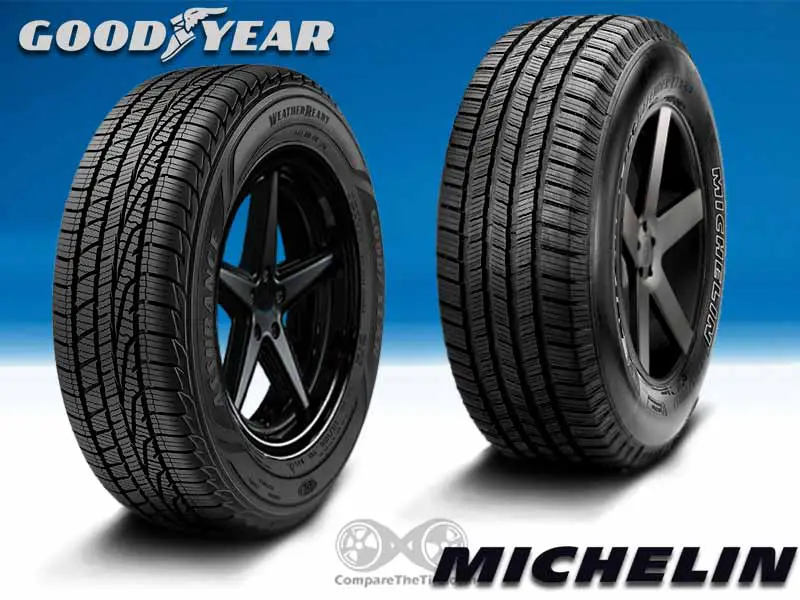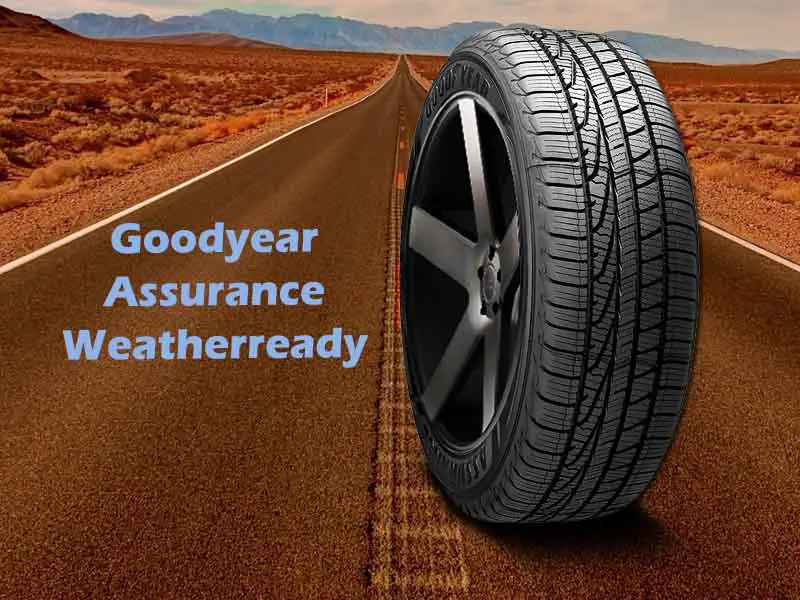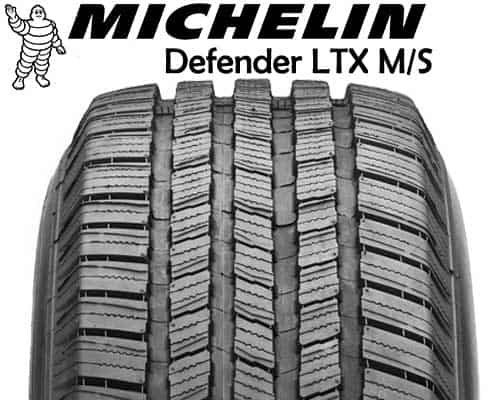With Weatherready, Goodyear’s goal was to develop a tire which has an enhanced traction on both wet and dry asphalts. And it does it’s job great. But the tire is not the most budget friendly option out there and that’s where the Defender comes in.
You should know this before going further: Mostly when it comes to Weatheready, it’s direct competitor is Michelin Defender T+H variant. That’s because the other variant, the LTX MS, is used for light trucks mostly.

But we compared the Goodyear tire with both these variants.
Michelin even has a more aggressive version of Defender, the AT2.
If we compare the tire with the LTX MS, then, Assurance Weatherready would provide better on road comfort and traction values and at the same time the Defender LTX MS would be able to perform well off road.
Surprisingly when it comes the handling, both are same.
Table of Contents
Overall Traction of these tires:
Starting with Weatherready, the asymmetric tire is seen with tons of siping and biting zig-zag edges on tread block.
This allows the tire to have a great performance especially on wet asphalts.
Similarly the sweeping grooves seen on the tire deals with hydroplaning very efficiently.

Looking at the Defender LTX MS, you can see the larger longitudinal grooves running on the circumference of the tire. These don’t allow as much contact with the road so the overall grip of the tire becomes lower.
But at the same time, the the inner and outer shoulder of both tires have equally same contact with the road. So dry handling is almost the same for both tires.

But same is not the case with the T+H variant of Michelin Defender. Here, things get totally different. As it has almost the same contact patch available as the Assurance tire.

And the traction values for these tire are surprisingly similar.
We tested these both tires with same size and on the same car and following were the results:
For Dry asphalts, Defender T+H had a braking distance of 88.6 feet. Here, Assurance Weatherready had a braking distance of 90 feet.
And for Wet asphalt, the Defender T+H had a wet braking distance of 127.3 feet, compared to Weatherready’s 125.4 feet.
So this means, the Defender T+H has a better dry road grip. And the Weatherready has a better wet grip. And it makes perfect sense looking at the tires as well.
In a similar manner, the wet handling times were better on Assurance compared to Michelin Defender T+H which was better on dry.
Moving on to the handling of both tire.
The Goodyear Wheatherready tire’s tread pattern design helps to improve its controllability in various weather.
This feature maintains ideal tire shape and provides constant road contact, which adjusts the steering responsiveness and driving stability. They call it “3D TredLock”.
At the same time, the reinforced polyamide construction maintains the ideal tire shape under the load and driving pressure affecting the model.
In this manner, the tire enhances the steering responsiveness and accuracy to the driver’s commands, while it fortifies the structure during the tire’s performance. This combination ensures the driver’s full control over the vehicle throughout the year.
The Michelin defender tires, on the other side, has a proportioned tread design comprised of stable, independent tread blocks with high-density, 3D sipes that deliver consistent traction in dry, wet, and wintery conditions.
So what do we know?
Looking at the results its very clear that the Defender t+h has better on road dry traction. And the Assurance has a better on road wet traction overall.
Durability of these tires:
The Goodyear Assurance Wheatherready tires are engineered with the latest technology, and the rubber has been compounded with selective chemicals to enhance its tread life.
The Goodyear Assurance Wheatherready gives out a 60k miles warranty while the Defender, 70k.
Michelin Defender has 10k more mileage warranty on it. And the tire last longer too. Why is that? Well, the difference is because of 2 things.
First has to do with more tread depth in Michelin Defender (12/32′ compared to Weatherready’s 11/32′)
And 2nd, is because of the construction of the tire.
Defender has 2 internal running belts which are further strengthened by 1 play of polyamide. This gives the tire more age.
But the tire however don’t have the Severe snow rating where Weatherready does.
Which tire is more comfortable?
The Goodyear Assurance Wheatherready tires are the genius combination of tread lock technology and evolving traction grooves which ensures tire’s tread lock together during cornering for better traction and enhanced grip.
This feature comes in handy on slush and provides a comfortable ride.
The tire also uses compounds including silica and soybean which make tires more pliable. And they feel more softer to drive on.
On the other hand, the Michelin Defender Tires have tuned tread pattern which ensures the comfort and quietness in the ride. They have high amounts of infused silica which increase the traction and lower the Noise.
Furthermore, the Michelin Defender’s comfort control technology helps here too but the tread of the tire is sturdy and hard. Because of this the tires feel stiff and bumpy.
So, overall, Weatherready is more comfortable both in terms of noise and drive.
Which tire is more fuel efficient?
The Goodyear Weatherready tires are also more fuel efficient. This is because they have lower rolling resistance in comparison here. (On Dry Roads)
On the other had, the higher contact with the road allows Michelin Defender to have more friction which translates into more fuel consumption.
However, the difference is very small.